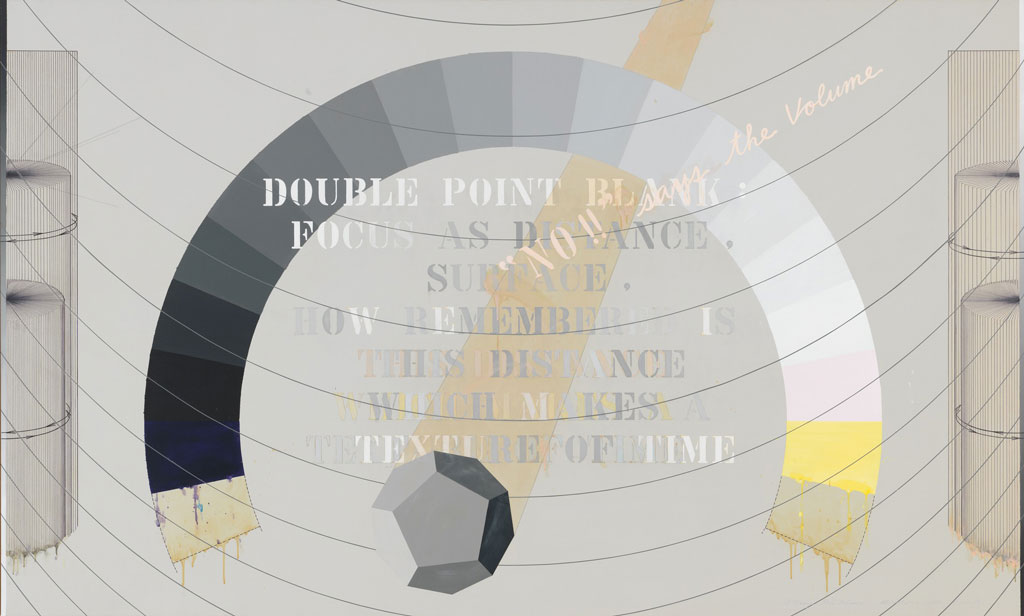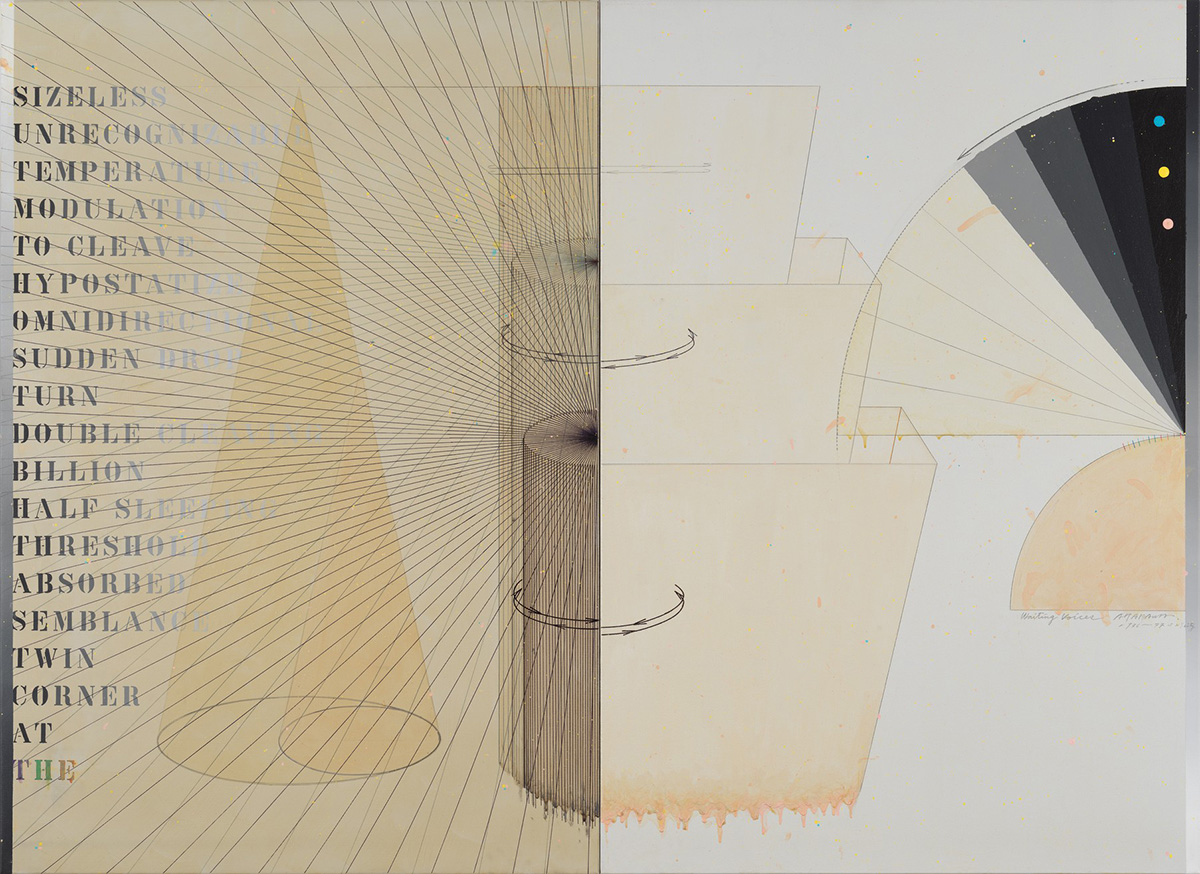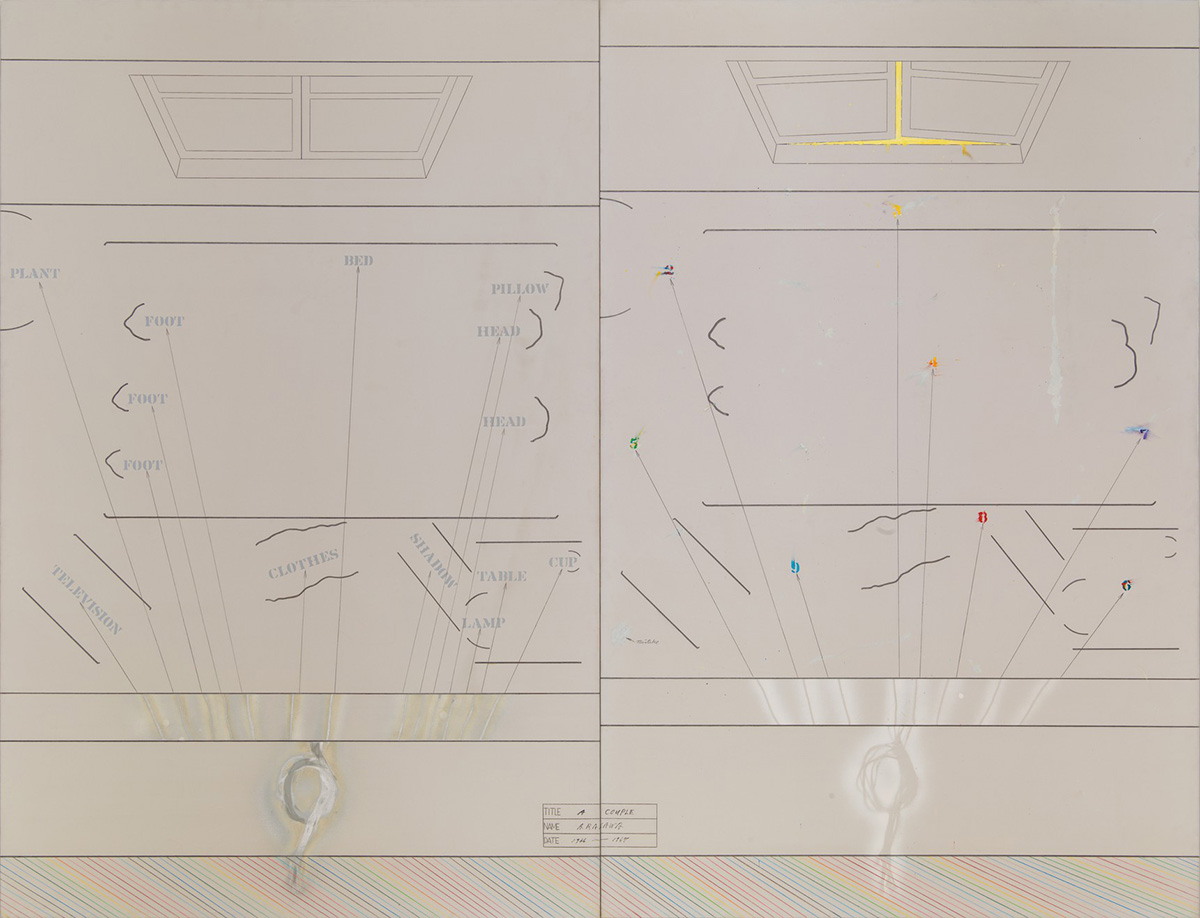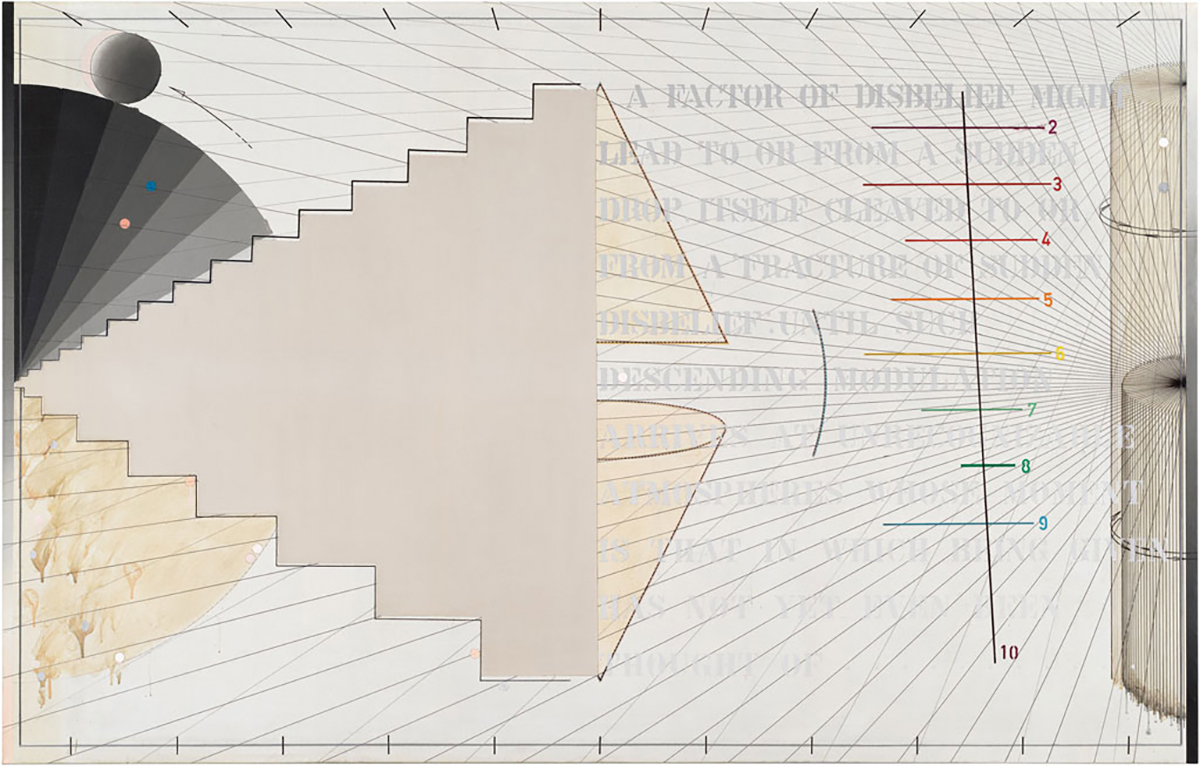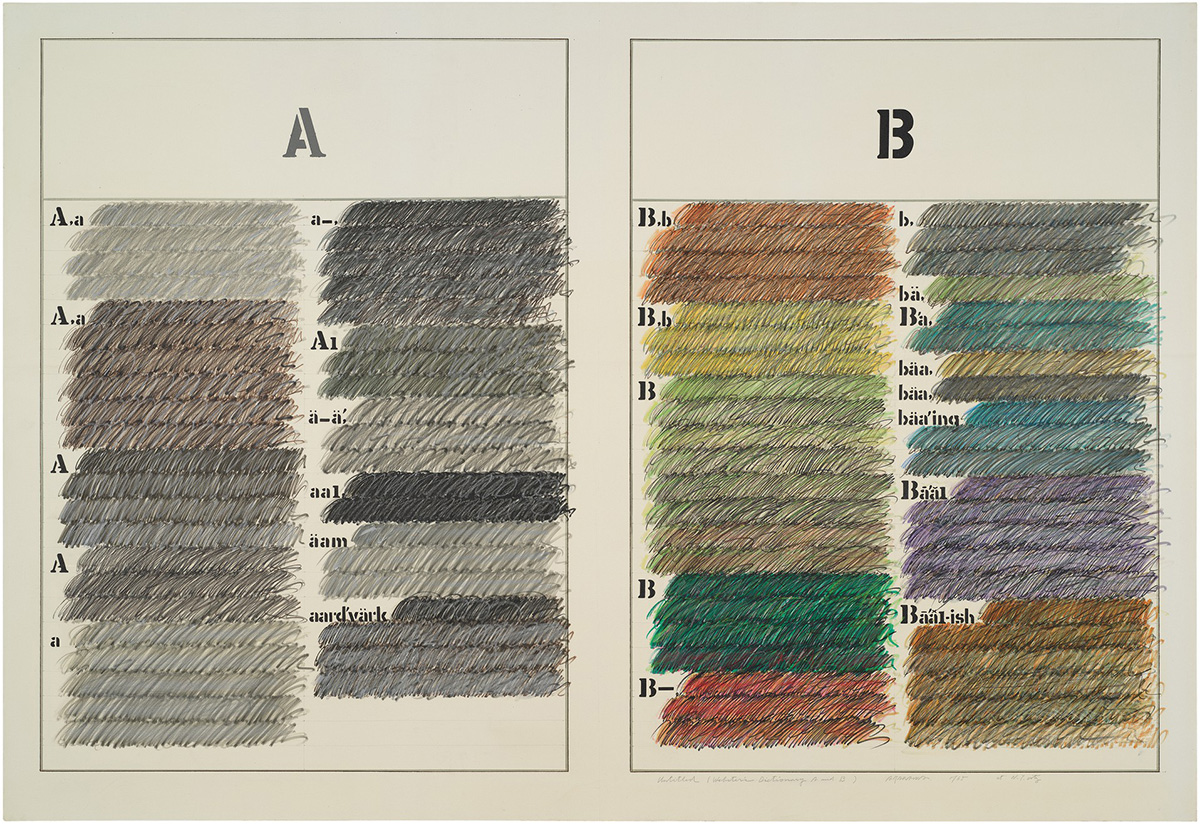ART CITIES: Basel-Arakawa
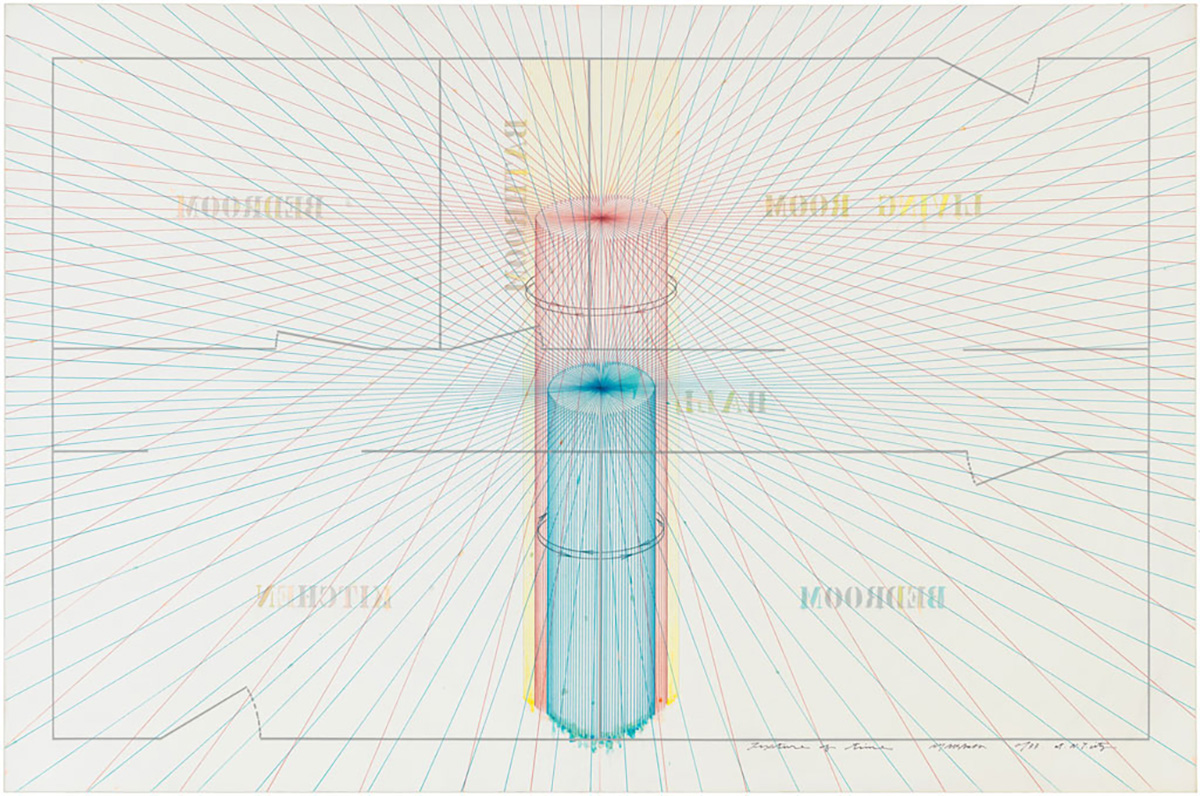 Born in Japan in 1936, Arakawa was one of the founding members of the Japanese avant-garde collective Neo Dadaism Organizers, describing himself as an “eternal outsider” and an “abstractionist of the distant future.” In 1961, he moved from Tokyo to New York. By the mid-1960s, his work had taken a pivotal turn with the “diagram paintings,” which combine words with highly schematic images suggestive of blueprints.
Born in Japan in 1936, Arakawa was one of the founding members of the Japanese avant-garde collective Neo Dadaism Organizers, describing himself as an “eternal outsider” and an “abstractionist of the distant future.” In 1961, he moved from Tokyo to New York. By the mid-1960s, his work had taken a pivotal turn with the “diagram paintings,” which combine words with highly schematic images suggestive of blueprints.
By Dimitris Lempesis
Photo: Gagosian Archive
The exhibition “Waiting Voice” features paintings and drawings produced by Arakawa over a twenty-year span. “A Diagram of Imagination” (1965), “Separated Continuums” (1966), and “A Couple” (1966–67) are among several paintings from the mid-1960s that represent architectural space. The earliest of the three shows part of a simple town plan layered over a grid; the others focus on interior space. In “Separated Continuums”, coordinates on a grid (featureless apart from two colored lines) are labeled with the names of household objects and fixtures. “A Couple “is, for the most part, similarly schematic, but Arakawa has added renderings of windows to the graphic marks as well as stenciled words and numbers that denote the contents of the room. The painting’s diptych format also hints at a narrative progression and allows viewers to imagine the unseen titular duo. In “Untitled (Voice Inoculations)” (1964–65), a diagram of a cube is labeled with words—some of them stenciled backward—that conjure an ambiguous play on orientation, scale, and other attributes of an object. “Hard or Soft No. 3” (1969) also features text, which in this case informs the viewer that the composition’s meandering arrows “indicate almost nothing” and that the accompanying numbers may be rearranged in any order. The two-part “Waiting Voices” (1976–77) pairs a grouping of geometric forms. Also on view are several works on paper, including “Study for “Blank” No. 2” (1981) and “Study for the “Sharing of Nameless” No. 3” (1983–84), both of which feature plan-like networks layered over words, arrows, and, in the later example, a grid of variegated tones. Blending coded signification with a shifting ambiguity, they build bridges from Arakawa’s imagination to create an art that is fully realized only in the mind and body of the viewer.
Shusaku Arakawa was seven years old when the onset of World War II led his family to place him in a Buddhist monastery for two years to protect him. The conditions he endured there produced persistent nightmares, however, in the hope that his fears could be alleviated, he was sent to live with a neighborhood doctor and his wife for three years after the war. Arakawa became interested in medicine as a teenager and worked as the doctor’s assistant while studying drawing, painting, and science in high school. From 1954 to 1958 Arakawa studied medicine, mathematics and art in Japan and staged several “happenings”. In 1960 he was affiliated with a Neo-Dada group in Tokyo and also participated in a demonstration against the continued existence of American military bases in Japan. To escape the controversy in which he then found himself embroiled, Arakawa moved to New York in 1961, where he met John Cage, Marcel Duchamp, and writer/philosopher Madeline Gins, whom he married. From 1963 to 1971, Arakawa and Gins collaborated on a project titled The Mechanism of Meaning, a series of more than 80 large canvases that explored the nature of representation through mixed-media collage. Thereafter they worked on art ranging from poetry to film, though they captured the most attention for their unconventional and challenging architectural designs. Among these were the Site of Reversible Destiny (1995), a whimsically landscaped park in Gifu, Japan, and the Bioscleave House (2008), a residence in East Hampton, N.Y., with a deliberately perplexing uneven floor plan. The artists’ City of Reversible Destiny, a planned 30-ha (75-ac) housing project in Tokyo, was never realized, but several apartments were built in adherence to its principles.
Photo: Arakawa, Textures of Time, 1977, acrylic, pencil and art marker on canvas, framed, 175.3 x 262.9 cm, © Estate of Madeline Gins, Reproduced with the permission of the Estate of Madeline Gins, Photo Rob McKeever, Courtesy Estate of Madeline Gins and Gagosian
Info: Gagosian Gallery, Rheinsprung 1, Basel, Switzerland, Duration: 25/11/2021-22/1/2022, Days & Hours: Tue-Sat 10:00-18:00, https://gagosian.com
